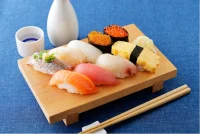Japanese sweets tour! Have a great time in Umeda!
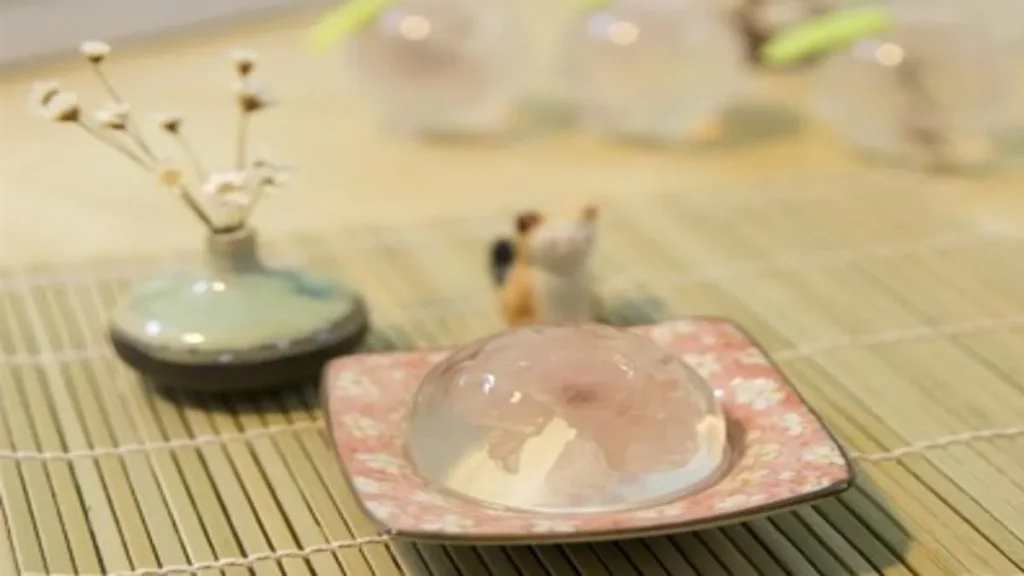
Foreigners living in Japan or planning to visit Japan, why don't you experience Japanese culture through Japanese sweets?
At cafes and specialty stores in Umeda, Osaka City, visitors can experience a wide variety of wagashi for beginners and lovers alike, and immerse themselves in a world of gastronomy filled with Japanese tradition and art.
Your encounter with Japanese confectionery will further deepen your interest in Japanese culture. Please enjoy this delicious adventure to the fullest, and don't forget to take pleasure in finding a wonderful souvenir to take back home.
■ What you will get from this article:
1. history, types and characteristics of Japanese confectionery, as well as its deep connection with Japanese culture
While learning about the evolution of Japanese confectionery from ancient times to the present and how it differs from Western confectionery, you can understand how Japanese confectionery has been related to Japanese culture.
2. long-established wagashi store and modern wagashi café
The range of stores from historic to contemporary sweets will be introduced.
3. selecting the perfect Japanese sweets for a wagashi tour or souvenir
Information on recommended souvenirs from various Japanese confectionery shops is presented here.
This article will make your Japanese sweets tour in Umeda more enjoyable and fulfilling.
What is the history, characteristics, and appeal of wagashi?

This section details the definition of wagashi, its rich history, diverse varieties, and cultural background. By delving deeper into the fascinating aspects of wagashi, you will gain a deeper understanding of wagashi and help to enrich your appreciation of Japanese culture.
What is Wagashi?
Wagashi is a traditional Japanese confectionery made mainly from natural ingredients such as rice, azuki beans, and sugar. Wagashi is characterized by its beautiful appearance and delicate taste, and there are a wide variety of types that reflect the seasons, regional climate, and culture.
Deeply connected with the tea ceremony, many of them are made in the shape of flowers and seasonal scenes, making them pleasing to the eye as well.
History of Wagashi
Wagashi has changed over time.
| date | Characteristics of Wagashi |
| Jomon - Yamato period (B.C. - 794) | Confectionery made from rice and beans |
| Nara Period (710-794) | Culture from the Tang Dynasty inflows and sugar-based confections appear. |
| Heian period (794-1185) | Influenced by aristocratic culture, gorgeous Japanese sweets developed |
| Kamakura period (1185-1333) | The rise of the samurai class led to an increase in wagashi for the common people |
| Edo period (1603-1868) | Wagashi became an established part of popular culture. Wagashi expressing seasonal scenes became popular, and such confections as Sakura Mochi and Imagawa-yaki were born. |
| Meiji Era onward (1868-) | Influenced by Western culture, new Japanese sweets with a blend of Japanese and Western influences |
Names, characteristics, and origins of wagashi
This section introduces the names, characteristics, and origins of typical Japanese confections.
| Confectionery Name | feature | Origin or type | History |
| Daifuku mochi | Rice cake (mochi) wrapped in bean paste | It means "great fortune" and is popular as a good-luck charm. | Created in the mid-Edo period (1700s) |
| Yokan(Japanese sweet bean jelly) | A sweet made by hardening azuki bean paste with Kanten (agar) | Neri Yokan, Mizuyokan, Mushiyokan, etc. | Introduced from China during the Muromachi Period (1336-1573) |
| Dorayaki | Small sponge cakes filled with bean paste | Named for its resemblance to the shape of a dora (gong) | Born in the Taisho Era (1912-1926) |
| Kashiwamochi | Rice cake wrapped in oak leaves | Customary to eat on Dragon Boat Festival (May 5) | Created in the late Edo period (1800s) |
| Rakugan | Dried confectionery made mainly from sugar and rice flour | Typical dried confections used in Japanese tea ceremony | Introduced from China in the Muromachi Period |
Yokan was originally a Chinese meat dish, but was introduced to Japan and began to use vegetable ingredients.
The names of Japanese confectioneries have various origins, including their shapes, ingredients, seasonality, and literary elements.
For example, Sakura mochi (cherry blossom mochi) is named for its shape wrapped around a cherry leaf, and Kuri Kinton (chestnut kinton) is named for its main ingredient, chestnuts.
Wagashi is also an art form that expresses the four seasons, culture, and history of Japan. They are deeply connected to the events and customs of the season and reflect the culture and traditions of Japan.
| season | Name of Wagashi |
| spring | Sakura mochi Kashiwamochi Yomogi mochi (Yomogi mochi) |
| summer | Mizu manju Kuzukiri Mizuyokan |
| autumn | Kuri Kinton Tsukimi dango Ohagi |
| winter | Zouni mochi 鏡餅(Kagami mochi) Zenzai |
Differences between Japanese and Western confectionery and types of Japanese confectionery and their charms
【 Four main differences between Japanese and Western confections】
| Classification. | Japanese confectionery | Western confectionery |
| 1. Raw Materials | Rice, azuki beans, sugar, agar (Kanten), etc. | Flour, butter, cream, chocolate, etc. |
| 2. Manufacturing method | Many traditional methods such as steaming, boiling, kneading, etc. | Focus on baking, whisking, and other production methods |
| 3. Taste | Elegant and discreetly sweet. | Tends to be rich and sweet. |
| 4. Cultural Background | Closely related to Japan's four seasons and traditional events | Reflects Western culture and customs |
【 Japanese confectionery types 】
| Types of Wagashi | feature | concrete example |
| fresh Western sweets (usu. containing cream or fruit, e.g. sponge cake, pie) | High moisture content and short shelf life | Jō-namagashi, Nerikiri, Mizu manju |
| half-dry confectionery | Intermediate in nature between fresh and dried confections | Dorayaki, Manju, Yokan |
| dried confectionary | Low moisture content and long shelf life | Rakugan, Konpeito, Arare |
| steamed confection (e.g. manju, uirou, steamed yokan) | Japanese sweets made by steaming | Steamed Yokan (Mushi Yokan), Steamed Manju (Mushi Manju) |
| baked sweets | Wagashi made by baking | Yomogi mochi (Yomogi mochi), sponge cakes, Monaka (Monaka) |
【The Charm of Japanese Sweets】
| attraction | Description. | Specific examples or additional information |
| Expression of seasonality | Expressing the seasons with materials and shapes of the four seasons | Sakura mochi in spring, Mizu manju in summer, Kuri Kinton in autumn, Zenzai in winter |
| Delicate flavor | The original taste of the ingredients is utilized and the sweetness is moderate. | Bitter taste of Matcha and freshness of Yuzu etc. |
| Beautiful appearance | Delicate and beautiful appearance by craftsmanship | Shapes and colors imitate flowers, leaves, and seasonal scenery. |
| Cultural implications | Deeply connected to traditional Japanese culture | Relation to tea ceremony and annual events |
| Healthy Aspects | Mainly vegetable-based ingredients, low in calories | Natural ingredients such as azuki beans, kinako (soybean flour), and kanten (agar) |
What are the special features of the Japanese confectionery in Umeda?

Umeda's wagashi stores have several distinctive elements, balancing tradition and innovation to meet the diverse needs of their customers.
The emphasis on seasonality is appealing!
Many wagashi stores in Umeda offer seasonal wagashi.
For example, you can enjoy seasonal wagashi such as sakura mochi and kashiwa mochi in spring, mizu-manju and kuzukiri in summer, kuri-kinton and tsukimi-dango in fall, and zenzai and yakimochi in winter.
There is an expression of Osaka-ness!
There are also many wagashi that reflect Osaka's food culture. For example, wagashi with a takoyaki (octopus dumplings) motif and monaka (a type of Japanese sweet made in the shape of Osaka Castle) are popular, as are wagashi that express Osaka's unique flavor.
There is an evolution with the introduction of new technologies!
While preserving traditional techniques, we are also actively incorporating new technologies. For example, we can see innovative efforts such as elaborate wagashi molds using 3D printers and wagashi for summer using the latest cooling technology.
High quality as a gift!
Umeda is the center of Osaka, where many business people come and go. For this reason, many high-quality Japanese confections suitable as gifts are sold there.
To cafe style offerings!
More and more café-style stores are opening so that customers can casually enjoy wagashi. The space where you can enjoy wagashi with matcha (powdered green tea) or sencha (sencha green tea) is very popular. Along with the rich taste of wagashi, each store is located within walking distance, making it a great place for wagashi beginners.
A Taste of Tradition in Umeda: 9 Recommended Wagashi Shops
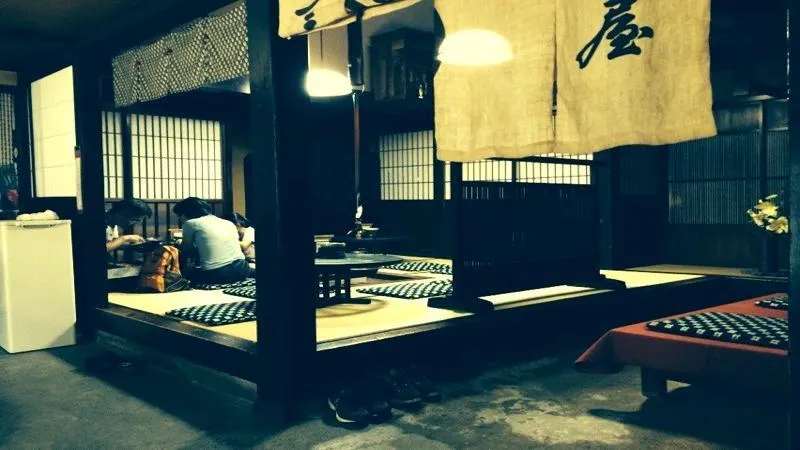
The charm of long-established Japanese confectionery stores lies in the fact that they continue to evolve to meet the needs of the times while respecting the techniques and traditions they have cultivated over the years. By learning about the history and characteristics of each store, you will be able to enjoy wagashi more deeply.
The Umeda area is home to many long-established Japanese confectionery stores with a long history. These stores offer attractive wagashi that combine traditional techniques with modern needs. Through a tour of wagashi, visitors can experience the depth of Japanese food culture and craftsmanship.
Nine historic Japanese confectionery stores and their charms!
There are several Japanese confectionery stores in Umeda that have been in business for more than 100 years. These stores cherish the techniques and traditions they have cultivated over the years, while also creating new wagashi to meet the needs of the times.
1. Taneya
This is a long-established Japanese confectionery in Shiga Prefecture. Its specialty is rice cakes made with rice from Shiga Prefecture. You can watch the rice cakes being made in the store. Seasonal wagashi and matcha (powdered green tea) sets are popular and can be enjoyed in an elegant Japanese space. A Japanese-style cafe called "Taneya Tea House" operated by Taneya is also popular.
【 Popular 】
Kine-tsuki mochi
Tsuki mochi azuki
Shaved ice with strawberries
【 access information 】
Address: Hankyu Umeda Honten B1F, 8-7 Kakudacho, Kita-ku, Osaka-shi, Osaka
Nearest station: 3 minutes walk from Hankyu "Osaka-Umeda" station
Business hours: 10:00~20:00
Closed: No regular holidays
2. Isshindo
It is a long-established Japanese confectionery established in 1912. Its signature product, Kuri mushi Yokan (chestnut-flavored sweet bean jelly), is made with carefully back-steamed chestnuts and is characterized by its elegant sweetness. A wide selection of seasonal wagashi is also available.
【 Popular 】 Fully Ripe Fruit Daifuku(Fruit Daifuku)
【 access information 】
Address: Hankyu Umeda Honten B1F, 8-7 Kakudacho, Kita-ku, Osaka-shi, Osaka
Nearest station: 3 minutes walk from Hankyu "Osaka-Umeda" station
Business hours: 10:00~20:00
Closed: No regular holidays
3. Fukujudo Hidenobu
It is a long-established Japanese confectionery established in 1948. Fukufukufu," which won the Japan Food Collection Gold Award, is popular and has a unique texture made by kneading rice flour into a blended dough and steaming it. Four flavors are available: azuki, matcha (green tea), strawberry, and yogurt.
Also in Osaka City is a café produced by Fukushudo Hidenobu calledSaryo TokiThere is also a
【Popular 】Fukufukufu(Fukufukufu)
【 access information 】
Address: B2F Hankyu Sanbangai, 1-1-3 Shibata, Kita-ku, Osaka
Nearest station: Direct connection from Osaka-Umeda Station on Hankyu Line / Umeda Station on Midosuji Subway Line, 1 minute walk to the right from North Ticket Exit
Business hours: 10:00 - 23:00
Closed: No regular holidays
4. Akafuku
Akafuku, a specialty of Ise, can be tasted in Umeda. You can enjoy the soft rice cake (Mochi) wrapped in smashed bean paste, the gentle taste of white azuki beans, and the savory aroma of brown sugar.
【 Popular 】 White Rice Cake Black Rice Cake(Shiromochi Kuromochi)
【 access information 】
Address: Hankyu Umeda Honten B1F, 8-7 Kakudacho, Kita-ku, Osaka-shi, Osaka
Nearest station: 3 minutes walk from Hankyu "Osaka-Umeda" station
Business hours: 10:00~20:00
Closed: No regular holidays
5. Mangetsu Confectionery
This is a long-established Japanese confectionery in Kyoto. Seasonal fresh confections, which are the work of artisans, look and taste elegant, and are very popular.
【 Popular 】 Ajari mochi (Ajari mochi)
【 access information 】
Address: Hankyu Umeda Honten B1F, 8-7 Kakudacho, Kita-ku, Osaka-shi, Osaka
Nearest station: 3 minutes walk from Hankyu "Osaka-Umeda" station
Business hours: 10:00~20:00
Closed: No regular holidays
6. Kasho seikanin
We are a long-established Japanese confectionary store in Kyoto. The delicate wagashi, which are the result of craftsmanship, are beautiful to look at and elegant in taste, making them ideal as gifts.
【 Popular 】
Seasonal Fresh Sweets
Warabimochi
dried confectionary
【 access information 】
Address: B1F Daimaru Umeda Store, 3-1-1 Umeda, Kita-ku, Osaka-shi, Osaka
Nearest station: 1 min. walk from JR Osaka Station / 2 min. walk from Midosuji Line Umeda Station / 2 min. walk from Hanshin Umeda Station
Business hours: 10:00~20:00
Closed: Open all days except Jan. 1 and Jan. 2
7. Namiyoshian
We are a long-established Japanese confectionery established in 1900. Seasonal Japanese sweets are loved by many people. Since it is located inside a train station, it can accommodate sudden cravings for Japanese sweets.
【 Popular 】
Warabimochi
Mizu manju
【 access information 】
Address: F6, Ekimarche Osaka, 3-1-1 Umeda, Kita-ku, Osaka-shi, Osaka
Nearest Station: JR Osaka Station, Sakurabashi Exit, right outside the ticket gates
Business hours: 11:00~22:00
Closed: No regular holidays
8. Kano-sho juan
Although relatively new since its establishment in 1967, this wagashi store has been creating unique wagashi while respecting traditional techniques. Seasonal fresh confections are popular.
【 Popular 】
Amo
Ikkoten
Hamori
Akai
Hanakaori
【 access information 】
Address: Hankyu Umeda Honten B1F, 8-7 Kakudacho, Kita-ku, Osaka-shi, Osaka
Nearest station: 3 minutes walk from Hankyu "Osaka-Umeda" station
Business hours: 10:00~20:00
Closed: No regular holidays
9. Tsuruya Hachiman
It is a long-established Japanese confectionery store established in 1872. The shop offers a wide variety of seasonal Japanese sweets such as "Kuri Kinton" and "Mizuyokan". A wide range of sweets are available, from traditional Japanese sweets to modern arrangements.
【 Popularity 】 Kuri Kinton
【 access information 1】
Address: Hankyu Umeda Honten B1F, 8-7 Kakudacho, Kita-ku, Osaka-shi, Osaka
Nearest station: 3 minutes walk from Hankyu "Osaka-Umeda" station
Business hours: 10:00~20:00
Closed: No regular holidays
【 access information 2】
Address: B1F Daimaru Umeda Store, 3-1-1 Umeda, Kita-ku, Osaka-shi, Osaka
Nearest station: 1 minute walk from JR Osaka Station / 2 minute walk from Umeda Station on the Midosuji Line / 2 minute walk from Hanshin Umeda Station
Business hours: 10:00~20:00
Closed: Open all days except Jan. 1 and Jan. 2
【 Characteristics of each wagashi shop】
| Japanese-style confectionary store | Long-established store | refined taste | Close to station | net (hair, netball, etc.) reservation | cafe | beginner tour | popularity Top 3 | standing estimate of someone's popularity |
| breeder(Taneya) | period | period | period | period | period | period | ||
| single-minded focus on ...(Isshindo) | period | period | period | |||||
| Kano Shoujuan(Kano-sho juan) | period | period | period | period | ||||
| akafuku(Akafuku) | period | period | ||||||
| Tsuruya Hachiman shrine (shrine dedicated to Amaterasu Oomikami)(Tsuruya Hachiman) | period | period | period | |||||
| Kyoto Confectionery Manzuki(Mangetsu) | period | period | period | |||||
| Hidenobu Fukushudo(Fukujudo Hidenobu) | period | period | period | period | period | period | ||
| Confectionery Seikan-in(Kasho seikanin) | period | period | period | period | ||||
| Naniwa-an (style of haikai poetry)(Namiyoshian) | period | period | period |
【 Product Features 】
| Japanese-style confectionary store | adzuki beans | Glutinous rice | Set with Matcha | Souvenirs of the day | Selected Materials | characteristic of Osaka |
| breeder(Taneya) | period | period | period | period | ||
| single-minded focus on ...(Isshindo) | period | period | period | period | ||
| Kano Shoujuan(Kano-sho juan) | period | period | ||||
| akafuku(Akafuku) | period | period | ||||
| Tsuruya Hachiman shrine (shrine dedicated to Amaterasu Oomikami)(Tsuruya Hachiman) | period | period | ||||
| Mangetsu Confectionery | period | period | ||||
| Hidenobu Fukushudo(Fukujudo Hidenobu) | period | period | period | |||
| Confectionery Seikan-in(Kasho seikanin) | period | period | period | |||
| Naniwa-an (style of haikai poetry)(Namiyoshian) | period | period | period |
Also look out for Japanese confectionery stores that are particular about their ingredients!
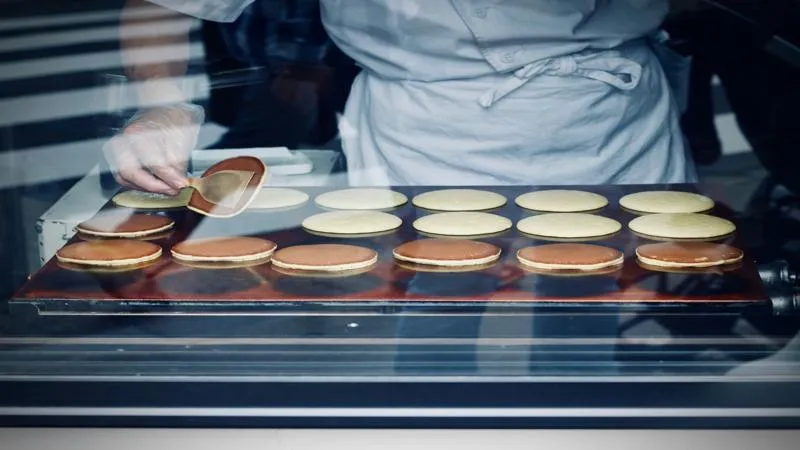
In the Umeda area, there are many stores offering high-quality Japanese confections made with the finest ingredients.
These stores use carefully selected ingredients and combine artisan techniques with traditional production methods to create flavorful wagashi.
A dish using glutinous rice
Glutinous rice is one of the most important ingredients for wagashi, and the taste of wagashi varies greatly depending on its quality. In the Umeda area, there are several stores that offer wagashi made from carefully selected glutinous rice.
1. Taneya
【Recommended products】Kine-tsuki mochi (pounded rice cake)
【 price 】 3 pieces 648 yen (tax included)
2. Akafuku
【Recommended Products】Akafuku mochi(Akafuku mochi)
【 price 】 8 pieces 900 yen (tax included)
3. Namiyoshian
【Recommended Products】Warabimochi(Warabimochi)
【 price 】 432 yen per pack (tax included)
Taste carefully selected azuki beans
Azuki is an important ingredient that determines the taste of wagashi. These wagashi are made with carefully selected azuki beans, which give them a deep flavor and elegant sweetness.
In particular, Fukujudo Hidenobu's "Fukufukufu" is a product that takes full advantage of the flavor of Hokkaido azuki beans, allowing you to enjoy the true taste of Japanese confectionery.
1. Fukujudo Hidenobu
【Recommended Products】Fukufukufu
【 price 】 8 pieces 1,296 yen (tax included)
2. Kano-sho juan
【Recommended products】Amo(Amo)
【 price 】 5 pieces 1,296 yen (tax included)
3. Tsuruya Hachiman
【Recommended products】Kuri Kinton(Chestnut Kinton)
【 price 】 5 pieces 1,620 yen (tax included)
4. Kasho seikanin
【Recommended Products 】Seasonal Fresh Sweets
【 price 】 432 yen per piece (tax included)
Check out our seasonal products
One of the charms of Japanese confectionery is the limited edition products that change with the seasons. Many products take advantage of seasonal flavors and ingredients, and are appreciated as gifts.
1. Fukujudo Hidenobu
【 Spring Limited Edition 】 Sakura mochi (Sakura mochi) (Early March - Mid April)
【 price 】 216 yen per piece (tax included)
2. Kano-sho juan
【 Summer Limited Edition 】 Mizu manju (July-August)
【 price 】 5 pieces 1,080 yen (tax included)
3. Isshindo
【 Autumn Limited Edition 】 Chestnut Daifuku (September-November)
【 price 】 1 piece 324 yen (tax included)
4. Tsuruya Hachiman
【Winter Limited Edition 】Yuzu Yokan(Yokan)(Dec.-Feb.)
【 price 】 1 bottle 1,296 yen (tax included)
5. Kasho seikanin
【 Seasonal products 】 Kamigami sweets (changed seasonally throughout the year)
【 price 】 432 yen per piece (tax included)
Ranking of Wagashi in Umeda Area
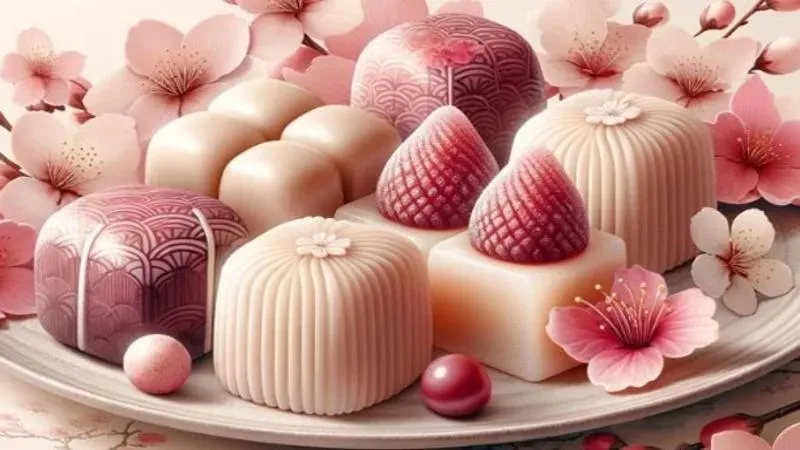
The ranking of wagashi in the Umeda area is based on actual sales data and customer evaluations, and is helpful in learning about popular wagashi.
Latest Top 3 Wagashi Ranking
The top three newest Japanese sweets in the Umeda area are also popular as gifts.
1st:Fukujudo Hidenobu "Fukufukufu."
【Characteristics】Japanese sponge cake made with rice flour and moist texture
【 price 】 8 pieces 1,296 yen (tax included)
2nd place:Kano-sho juan Amo.
【Characteristics】Mochi rice cake with a sticky texture, filled with a sweet bean paste.
【 price 】 5 pieces 1,296 yen (tax included)
3rd place:Isshindo Chestnut mushi Yokan
【 Characteristics 】 Chestnut-flavored yokan, a Japanese sweet with a refined sweetness
【 price 】 1 bottle 1,620 yen (tax included)
Introduction of Wagashi, a regular on the ranking list
There are popular products that consistently rank high in the Umeda area's Japanese confectionery rankings.
These wagashi have been loved by many people for many years. They are a gem of a fusion of traditional flavors and ingenuity adapted to the times.
1. Tsuruya Hachiman Kuri Kinton
【 Characteristics】 Japanese confectionery with rich chestnut flavor and refined sweetness
【 price 】 5 pieces 1,620 yen (tax included)
2. AkafukuAkafuku mochi
【Characteristics】 Ise's famous rice cake wrapped in red bean paste
【 price 】 8 pieces 900 yen (tax included)
3. Namiyoshian Warabimochi
【Characteristics】Wagashi with a smooth texture, Warabimochi (Warabi rice cake), topped with Koshi-an (sweetened red bean paste).
【 price 】 432 yen per pack (tax included)
4. Kasho seikanin Seasonal Sweets
【 Feature 】Beautiful upper confectionery that changes with the seasons.
【 price 】 432 yen per piece (tax included)
5. Taneya Kine-tsuki mochi
【Characteristics】Mochi sweets with a chewy texture
【 price 】 3 pieces 648 yen (tax included)
Also Japanese sweets events around Umeda!
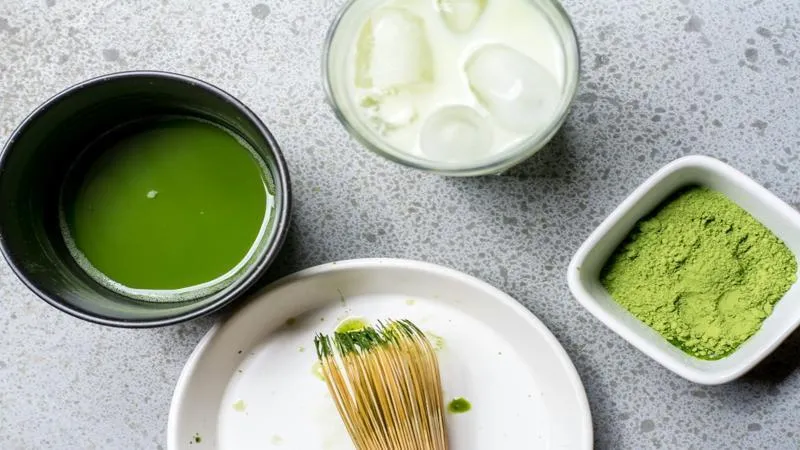
Various wagashi events are held throughout the year in the Umeda area. These events are an opportunity to enjoy special wagashi that you would not normally have the chance to taste, and are a great place to experience the depth of wagashi culture.
Introduction of Wagashi Fair at Umeda Hankyu
The Umeda Hankyu holds regular Japanese confectionery fairs. At these fairs, famous stores from all over Japan come together to buy rare Japanese sweets that are not usually available in Umeda.
One of the most notable fairs held recently was the "47 Prefectures Confectionary Tour.
This event was held from March 27 to April 2, 2024, at the Food Stage on the basement level.
The event featured one confection from each of Japan's 47 prefectures, allowing visitors to enjoy the diversity of Japanese sweets from all over the country at once.
An example of the Japanese sweets sold:
1. Toyama Prefecture:GoroumaruyaT5
【 Characteristic 】 Thin dried confections with five flavors: Sakura, Matcha, Yuzu, Sesame and Wasanbon.
【 price 】 5pcs 864 yen
2. Nagano Prefecture:Raichou No Sato Hompo TanakayaRaicho no Sato Mini
【Characteristics 】Famous confectionery from Nagano Prefecture with a crispy texture
【 price 】 9pcs. 810 yen
3. Gifu Prefecture:ShogetudoKuri tsutsumi Sakura
【 Feature 】 Seasonal cherry blossom flavored chestnut confectionery
【 price 】 314 yen per piece
Serious employment support to help you realize your dream of working in Japan!

Do you want to work in Japan?
Let us "Goandup" make that dream a reality!
【 Program Features 】
✅ JLPT N3 level Japanese language acquisition
✅ Thorough preparation for the specific skills test
✅ Full support for job hunting in Japan
Business-focused one-on-one lessons will help you find a job in Japan in the shortest possible time.
【 Program Menu 】
- Individual Japanese language lessons
- Intensive curriculum to obtain N3, especially specialized lessons for business Japanese that can be used at work.
- Intensive curriculum to obtain N3, especially specialized lessons for business Japanese that can be used at work.
- Preparation for the Specific Skills Test
- Customized materials for specific skill tests will be used to focus on frequently asked questions and learning to pass the test.
- Customized materials for specific skill tests will be used to focus on frequently asked questions and learning to pass the test.
- Resume and CV support
- To create resumes and CVs tailored to Japanese corporate culture, and to brush up on self-promotion and motivation for application.
- To create resumes and CVs tailored to Japanese corporate culture, and to brush up on self-promotion and motivation for application.
- Interview Preparation
- Guidance on areas for improvement through mock interviews and feedback based on corporate interview scenarios. Learn interview etiquette and behavior unique to Japan.
- Guidance on areas for improvement through mock interviews and feedback based on corporate interview scenarios. Learn interview etiquette and behavior unique to Japan.
- career consulting
- Provide introductions to companies that match the participant's career goals, select companies to apply to, and provide advice on the level of knowledge required by the companies to which the participant is applying.
- Provide introductions to companies that match the participant's career goals, select companies to apply to, and provide advice on the level of knowledge required by the companies to which the participant is applying.
- Chat Support
- In addition to one-on-one individual lessons, we also accept casual questions via DM (visa application, living support, assistance in finding a room, etc.).
If you are serious about your career in Japan, join us now!
▶︎ for more informationclick here.
We will do our best to support your success in Japan!
summary
Umeda is the perfect place to explore Japan's traditional confectionery, wagashi. In this article, we have introduced you to the world of wagashi in Umeda, where tradition and innovation come together. When you visit Japan, be sure to experience a wagashi tour in Umeda.
Points to enjoy visiting Japanese sweets in Umeda:
- Easy access: You can conveniently visit each store from the Umeda Station area.
- Seasonal: You can enjoy wagashi of the four seasons. Don't miss the seasonal flavors.
- Tradition and innovation: Enjoy a wide range of wagashi, from the traditional flavors of long-established shops to new innovations.
- Craftsmanship: You can feel the skill of the artisan in our unique Japanese sweets, which are made with the finest ingredients.
- Events: Wagashi fairs and other events provide opportunities to encounter Japanese sweets from various regions of Japan.
Next time you visit Umeda, why not make your own wagashi tour plan? Not only will you enjoy the delicious taste, but you will also discover more deeply the charm of Japan by experiencing the culture and techniques that go into making wagashi.
Visit wagashi stores and taste them on the spot, or choose one as a souvenir for a loved one. We hope you have a hearty time in the world of wagashi in Umeda.
【 reference site 】
History of Wagashi|Ministry of Agriculture, Forestry and Fisheries of Japan,Types of Wagashi|National Wagashi Association of Japan
Your support will help us!
Thank you for visiting Goandup Picks. Our mission is to provide you with more useful information to show the world what Japan has to offer.
Your support will help us to further enhance our activities, so please support us!




